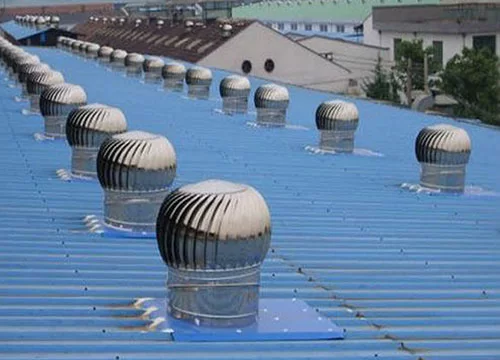Roof Extractor
Home / Products / Roof Extractor
Roof Extractor
A roof extractor, also known as a roof exhaust fan or rooftop ventilator, is a type of mechanical ventilation device installed on the roof of a building. It is designed to exhaust stale air, heat, moisture, and pollutants from the interior spaces and release them into the atmosphere outside. Here’s a closer look at its function and construction:
Functions of Roof Extractor
- Air Extraction: The primary function of a roof extractor is to remove hot, stale, or contaminated air from the building's interior. This includes air that has accumulated from various sources such as manufacturing processes, kitchens, bathrooms, and other occupied spaces.
- Heat Dissipation: Roof extractors help to dissipate excess heat that builds up within the building due to factors like sunlight, equipment operation, and human occupancy. By expelling hot air from the building, they contribute to maintaining a comfortable indoor temperature and reducing the load on HVAC systems.
- Moisture Removal: In areas prone to high humidity levels, such as bathrooms, kitchens, and laundry rooms, roof extractors help to remove moisture-laden air. This helps to prevent the buildup of mold, mildew, and moisture-related damage to building materials and finishes.
- Pollutant Extraction: Roof extractors assist in removing airborne pollutants, odors, and contaminants from the indoor environment. They help to improve indoor air quality by expelling pollutants generated by processes, equipment, and occupants.
Construction of Roof Extractor
- Fan Unit: The core component of a roof extractor is the fan unit, which is responsible for generating airflow to exhaust air from the building. The fan may be driven by an electric motor or a belt-drive system and is typically housed within a weatherproof enclosure to protect it from the elements.
- Weatherhood: A weatherhood or cowling is installed over the fan unit to shield it from rain, snow, wind, and other weather conditions. The weatherhood is designed to prevent water ingress while allowing airflow to enter the fan intake.
- Ductwork: Roof extractors are connected to the building's ductwork system, which channels the extracted air from the interior spaces to the rooftop exhaust fan. The ductwork may be made of materials such as galvanized steel, aluminum, or PVC, and is insulated to prevent condensation and heat loss.
- Bird Screen: To prevent birds, insects, debris, and foreign objects from entering the fan unit, a bird screen or mesh grille is installed over the fan intake. The bird screen allows airflow to pass through while blocking unwanted contaminants.
- Mounting Base: Roof extractors are typically mounted on a sturdy base or curb installed on the roof surface. The base provides support for the fan unit and ensures proper alignment and stability during operation.
- Controls: Roof extractors may be equipped with controls and sensors to regulate fan speed, monitor airflow rates, and activate the fan in response to temperature, humidity, or occupancy levels. Automatic control systems help to optimize energy efficiency and maintain desired indoor environmental conditions.



